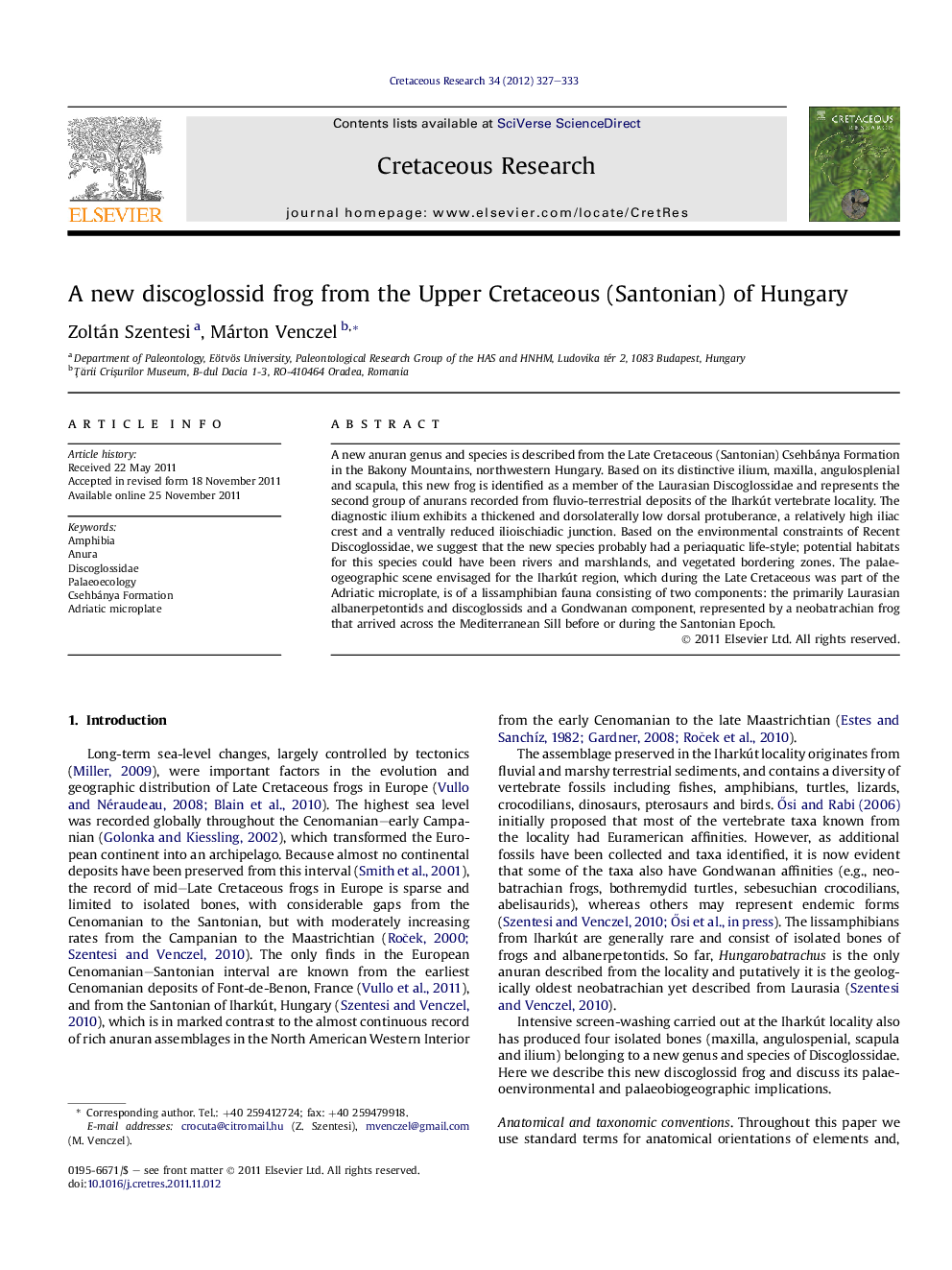| کد مقاله | کد نشریه | سال انتشار | مقاله انگلیسی | نسخه تمام متن |
|---|---|---|---|---|
| 4747386 | 1642088 | 2012 | 7 صفحه PDF | دانلود رایگان |

A new anuran genus and species is described from the Late Cretaceous (Santonian) Csehbánya Formation in the Bakony Mountains, northwestern Hungary. Based on its distinctive ilium, maxilla, angulosplenial and scapula, this new frog is identified as a member of the Laurasian Discoglossidae and represents the second group of anurans recorded from fluvio-terrestrial deposits of the Iharkút vertebrate locality. The diagnostic ilium exhibits a thickened and dorsolaterally low dorsal protuberance, a relatively high iliac crest and a ventrally reduced ilioischiadic junction. Based on the environmental constraints of Recent Discoglossidae, we suggest that the new species probably had a periaquatic life-style; potential habitats for this species could have been rivers and marshlands, and vegetated bordering zones. The palaeogeographic scene envisaged for the Iharkút region, which during the Late Cretaceous was part of the Adriatic microplate, is of a lissamphibian fauna consisting of two components: the primarily Laurasian albanerpetontids and discoglossids and a Gondwanan component, represented by a neobatrachian frog that arrived across the Mediterranean Sill before or during the Santonian Epoch.
► We describe, based on isolated bones, a new Santonian discoglossine frog.
► The frog’s ilium suggest that it was a good jumper and swimmer.
► Habitats and breeding places for this frog could have been rivers and marshlands.
► The Iharkút frogs demonstrate links to both Laurasia and Gondwana.
Journal: Cretaceous Research - Volume 34, April 2012, Pages 327–333